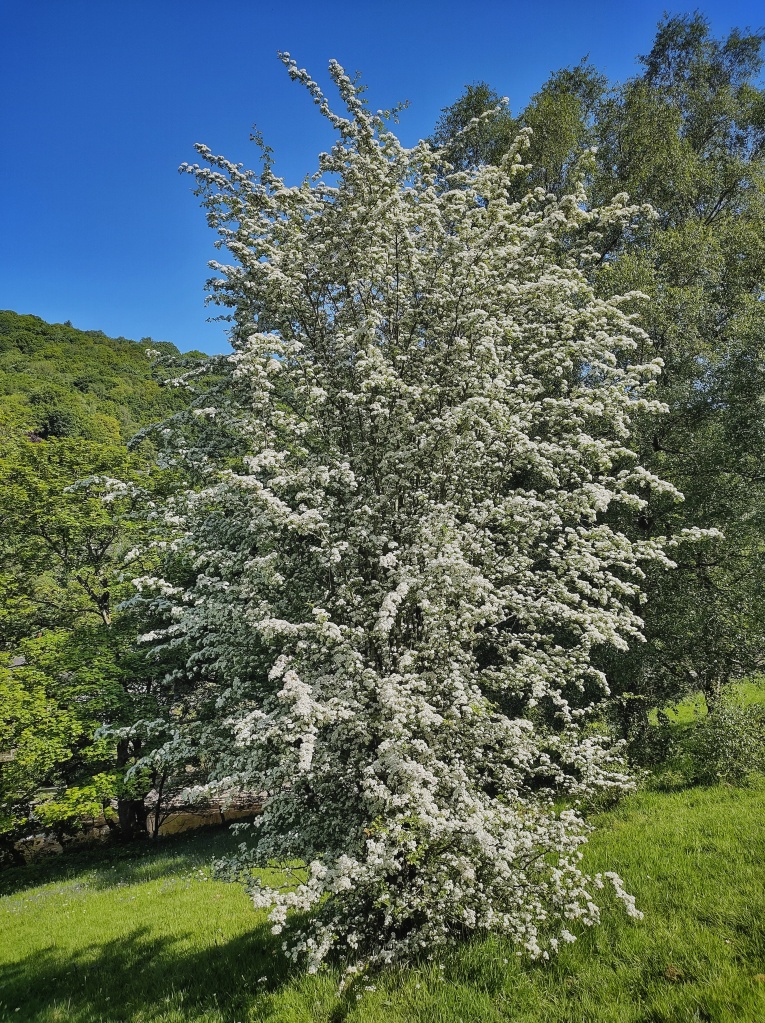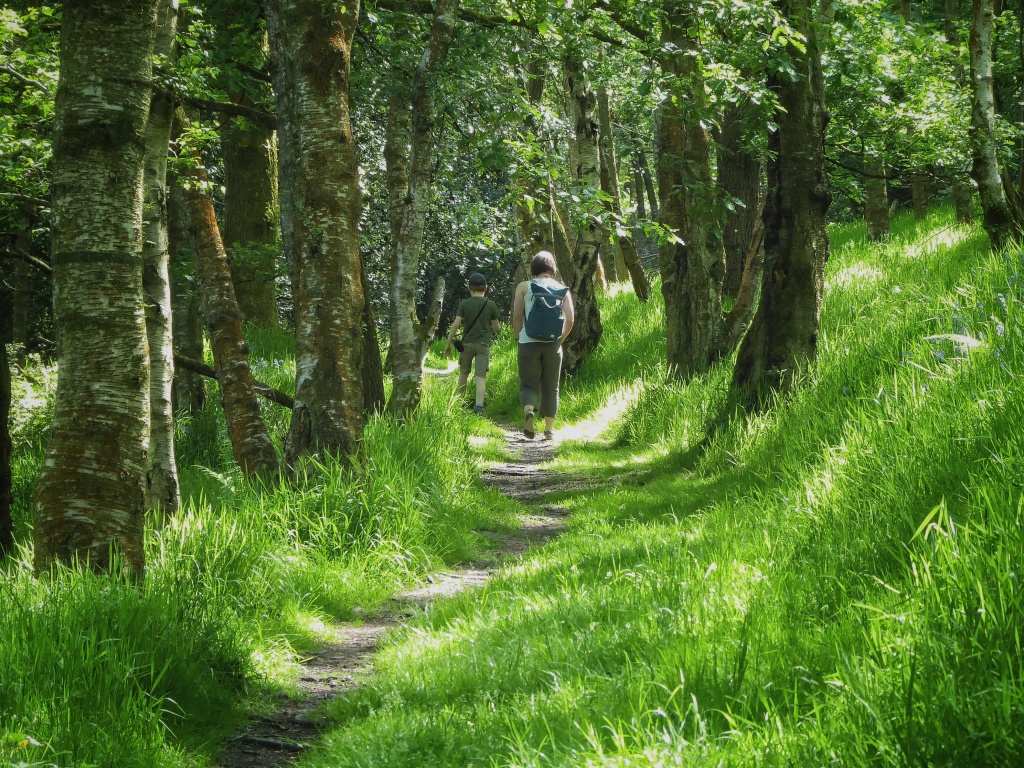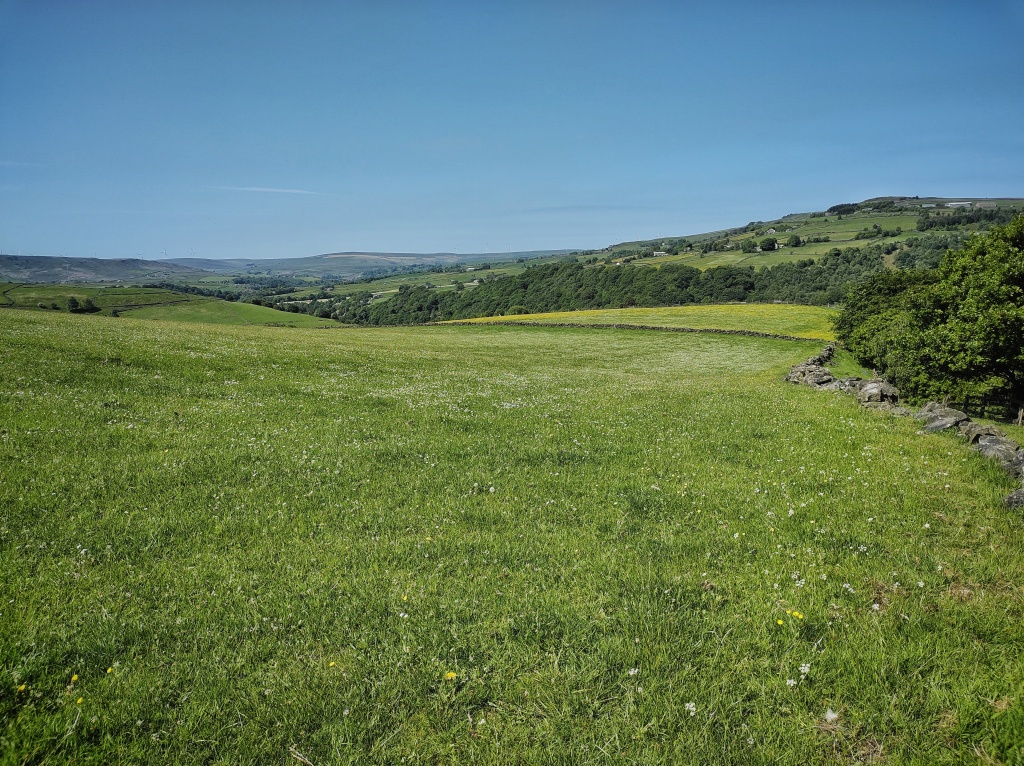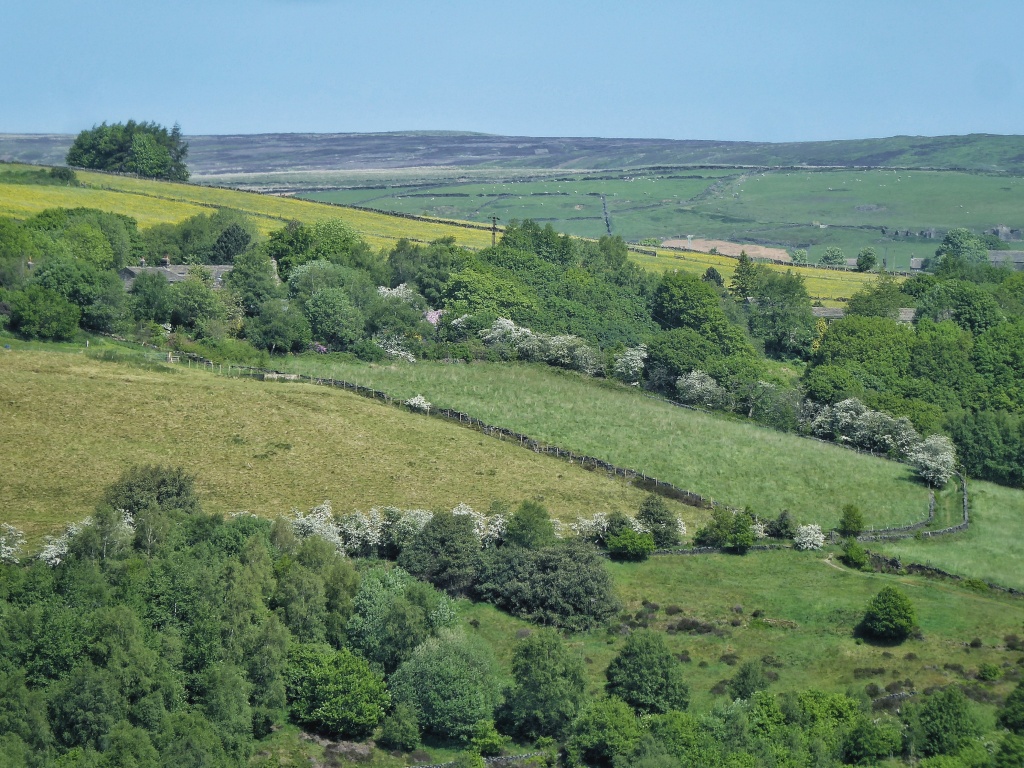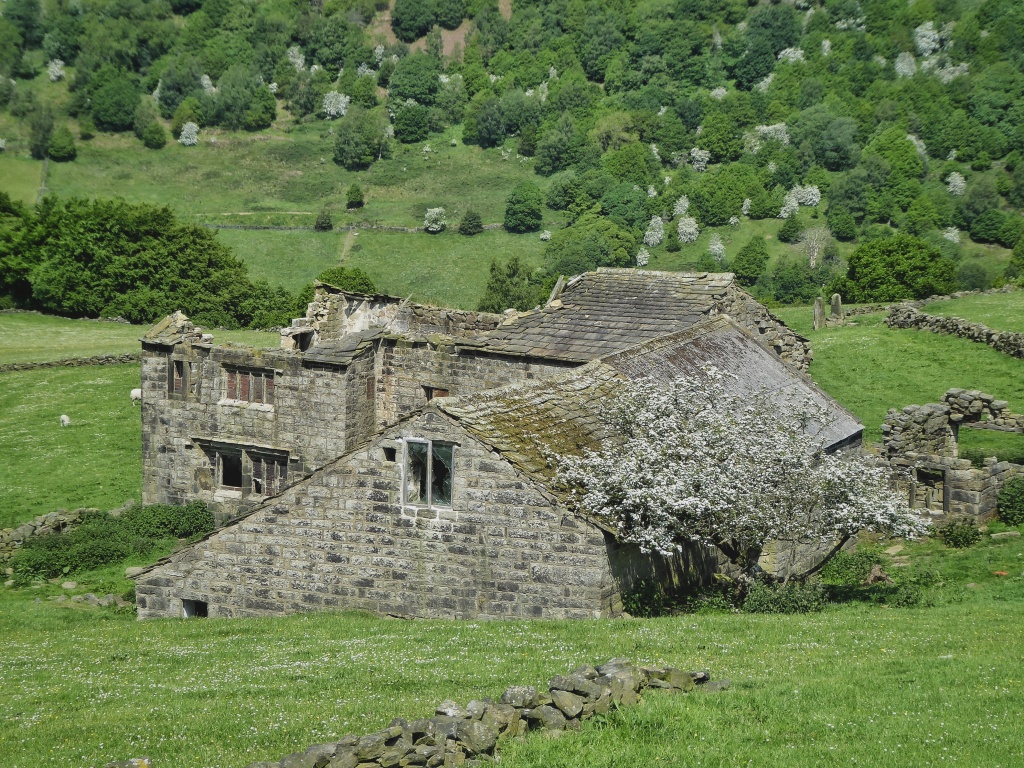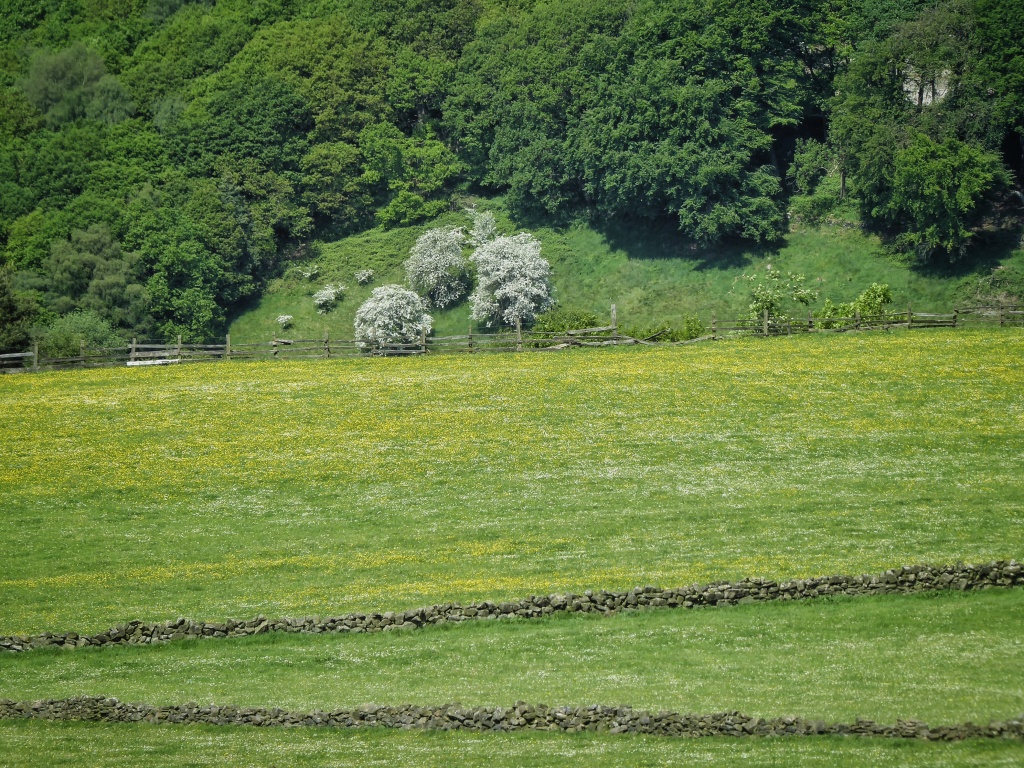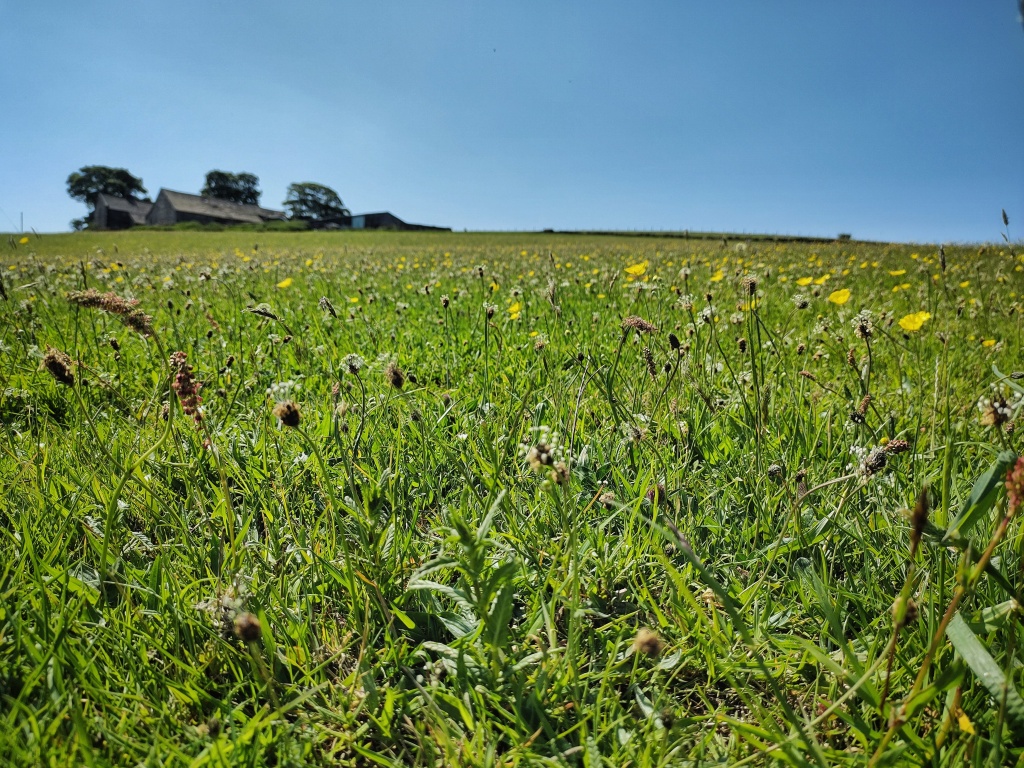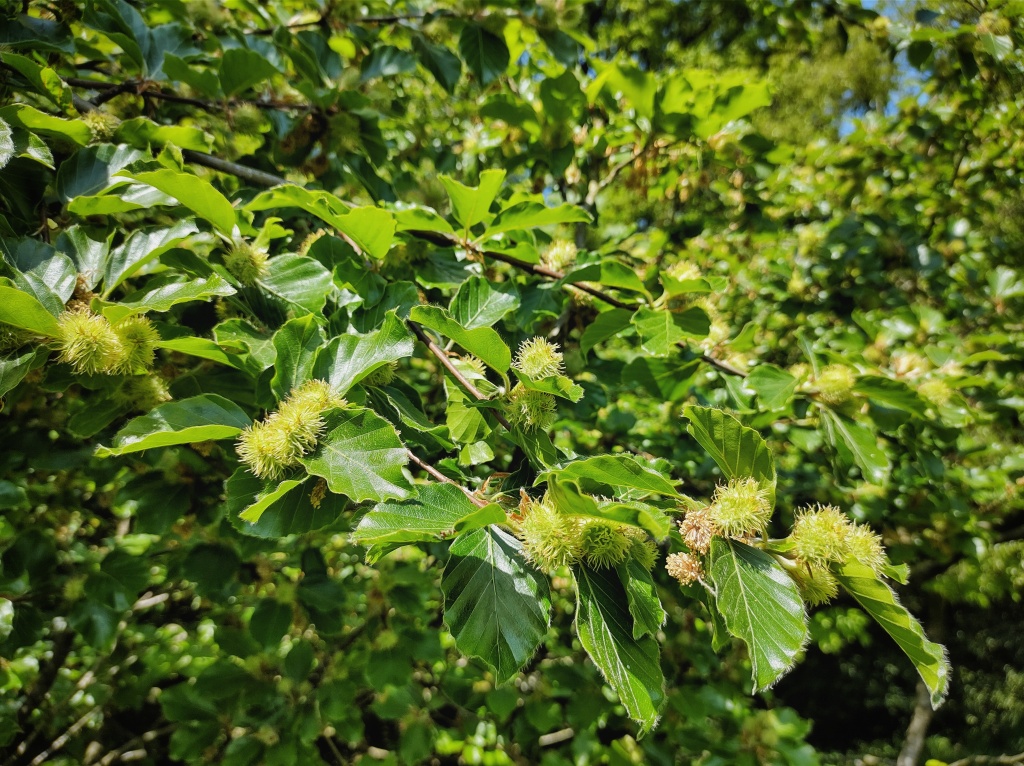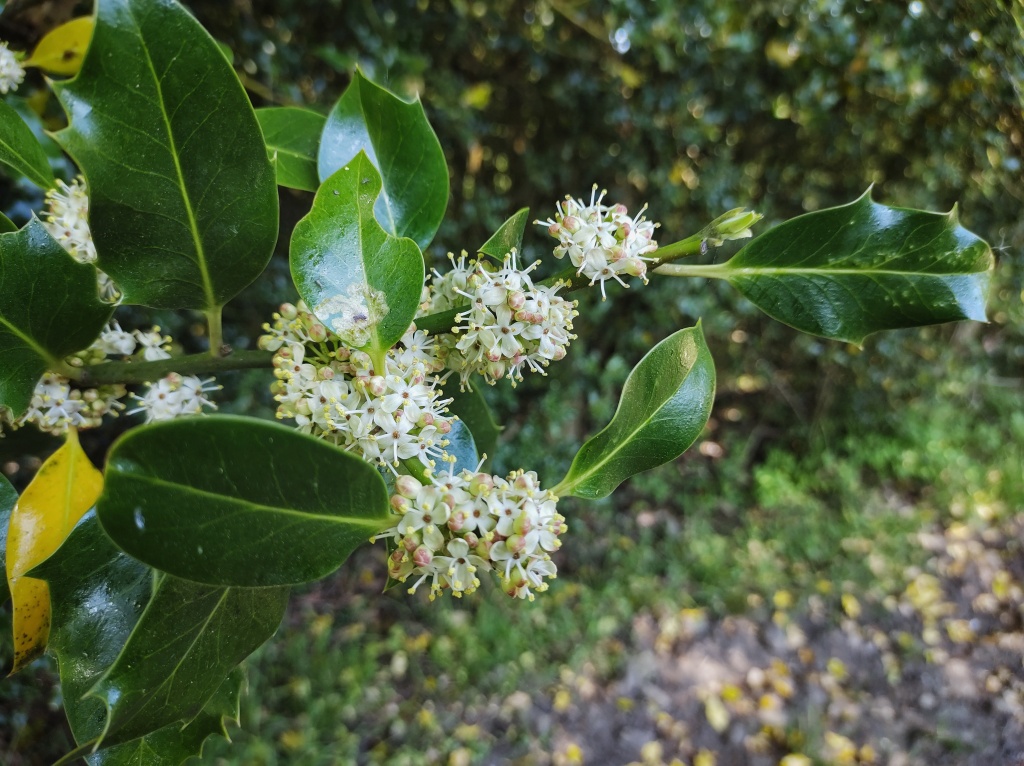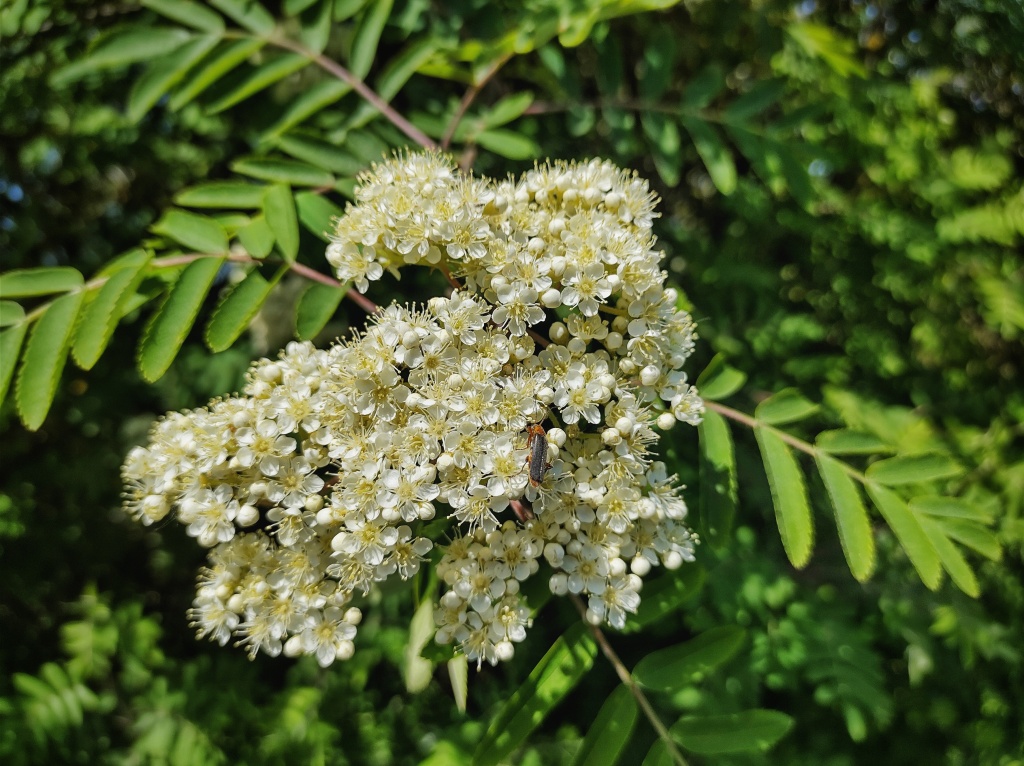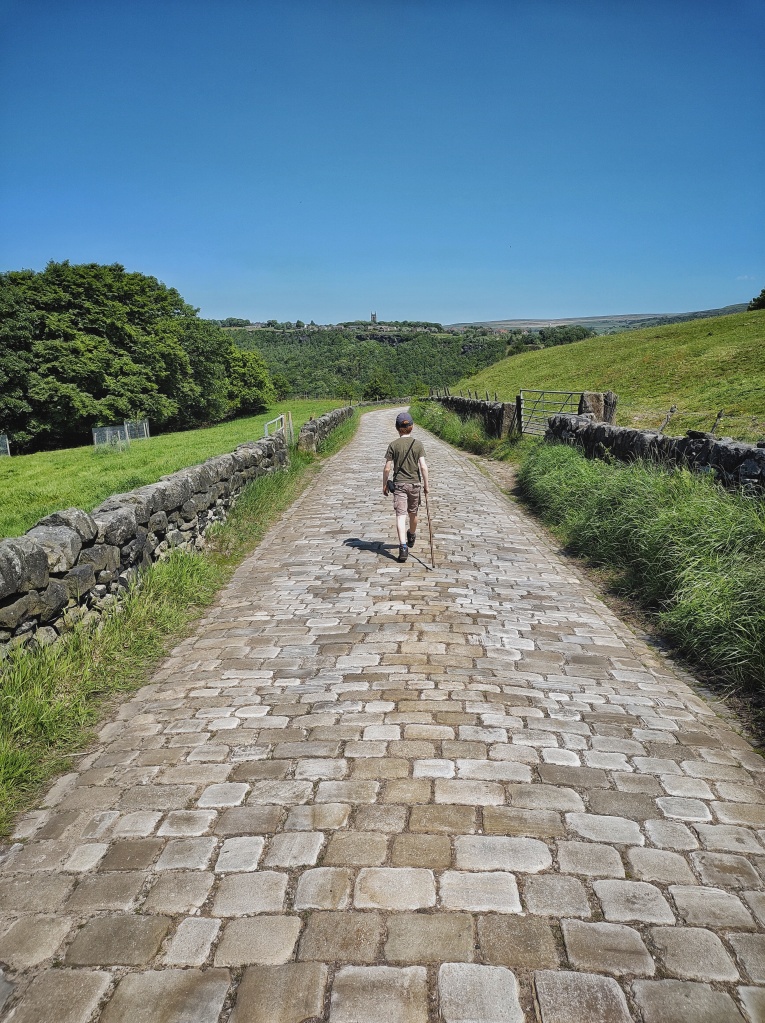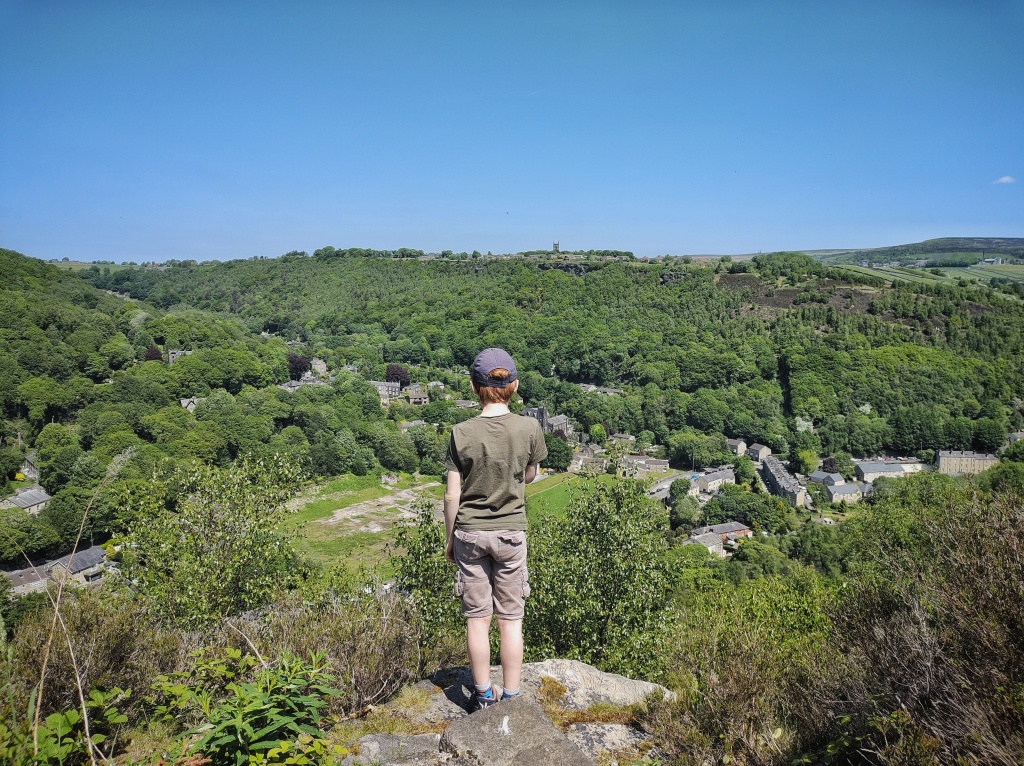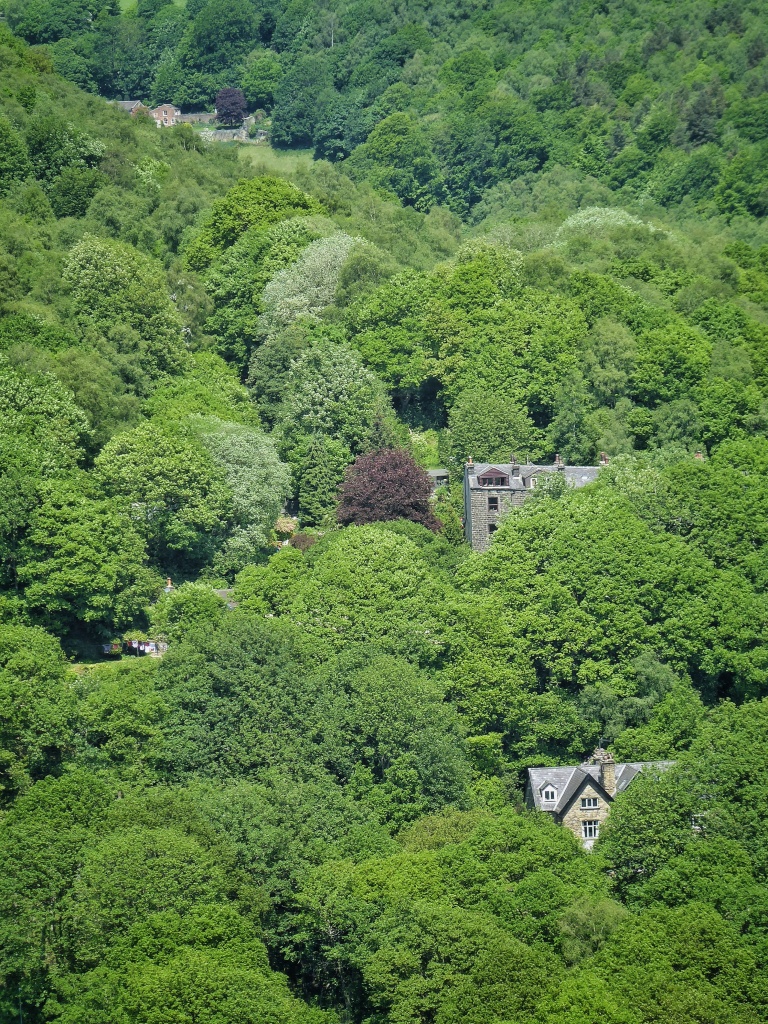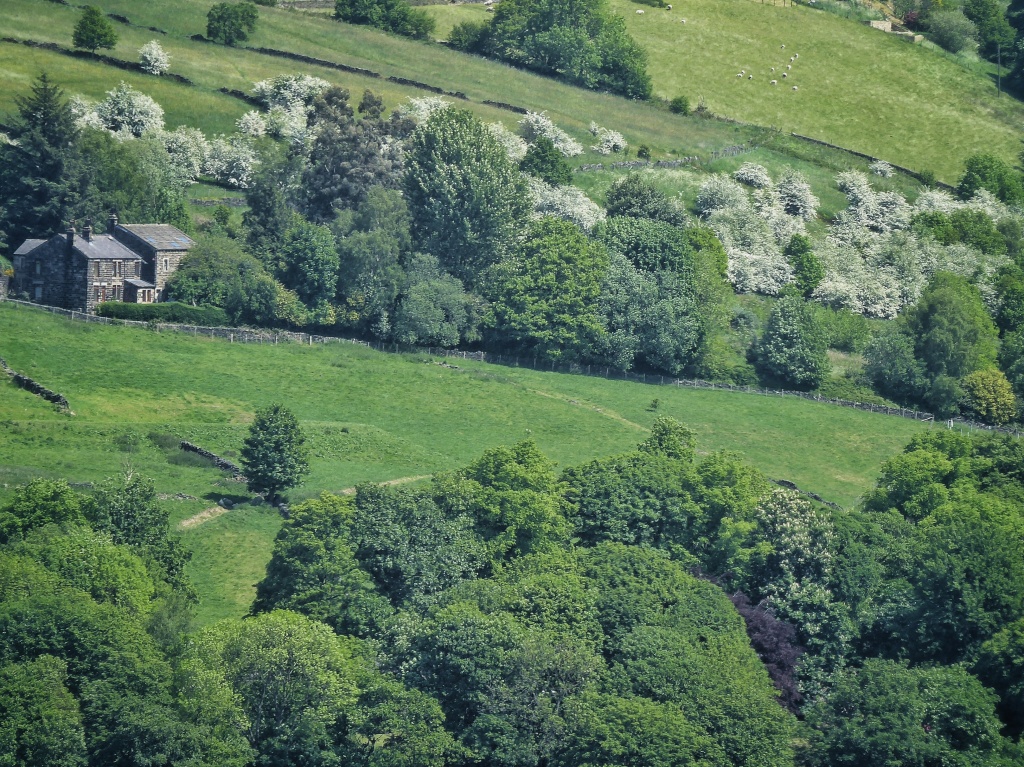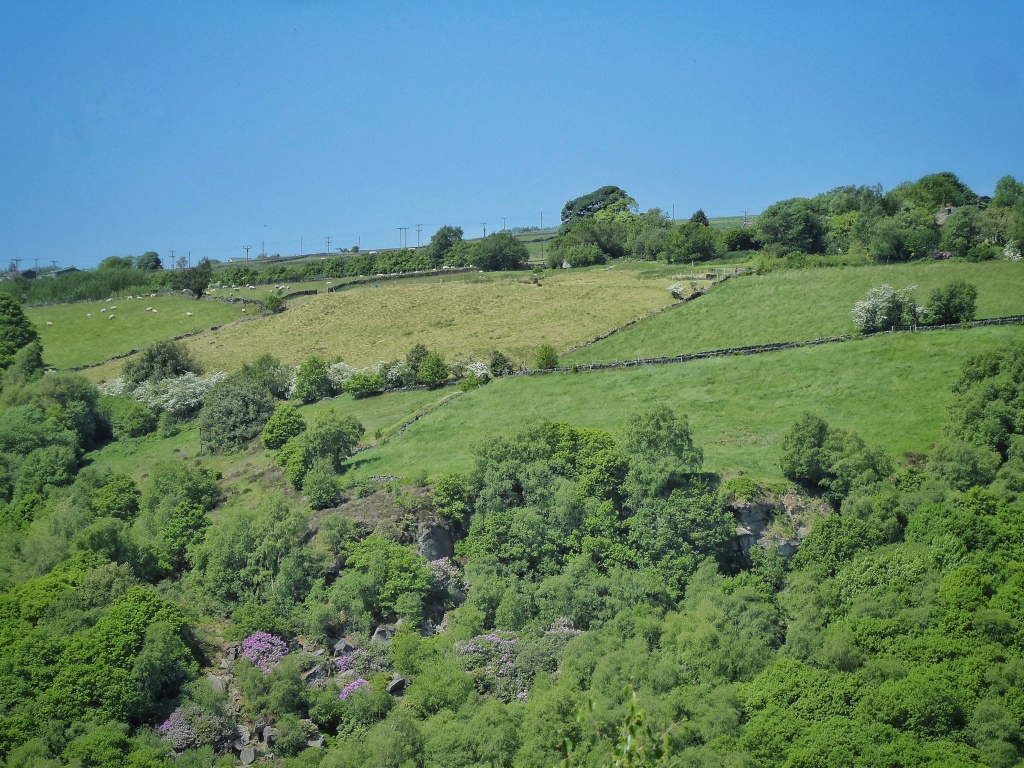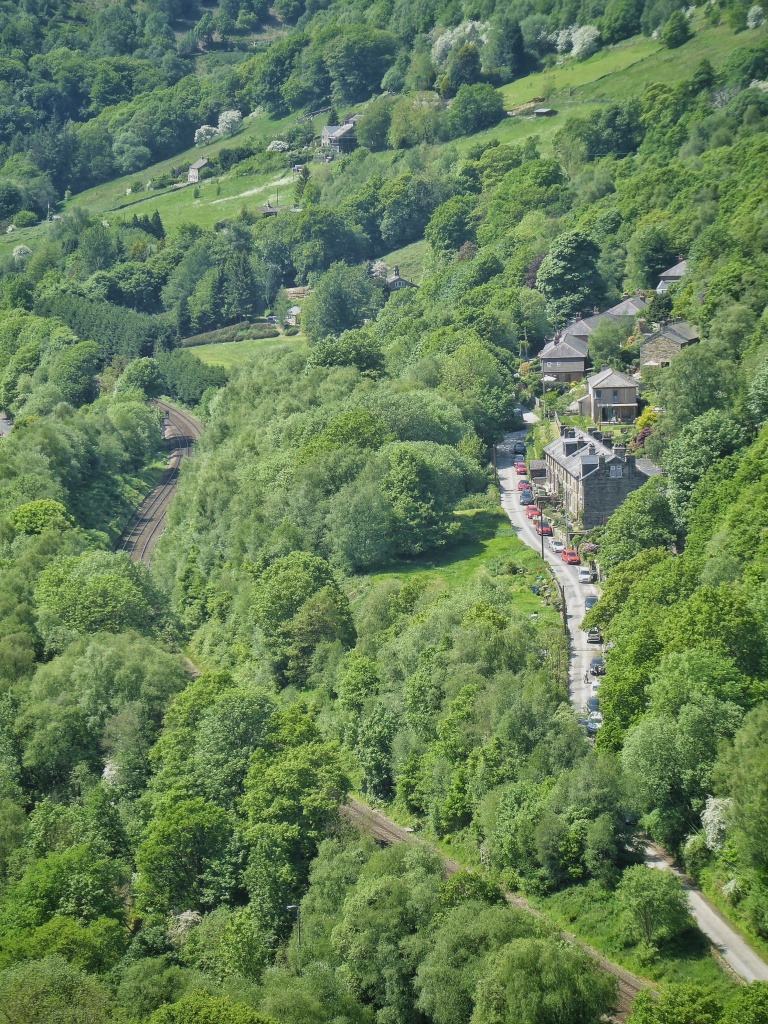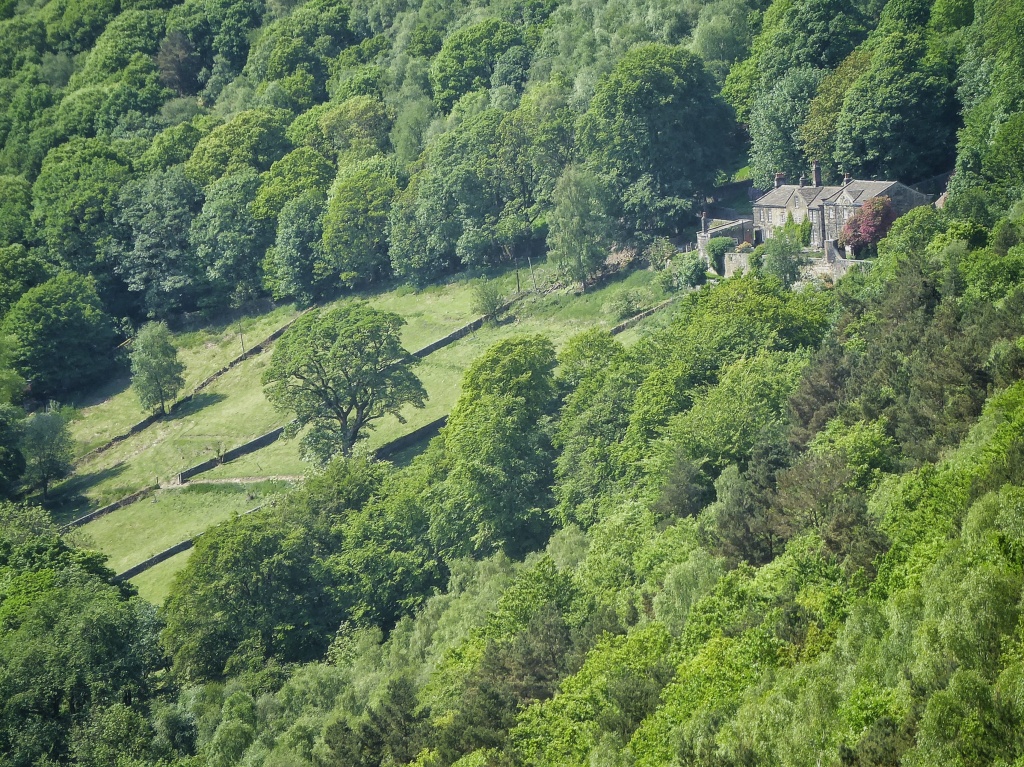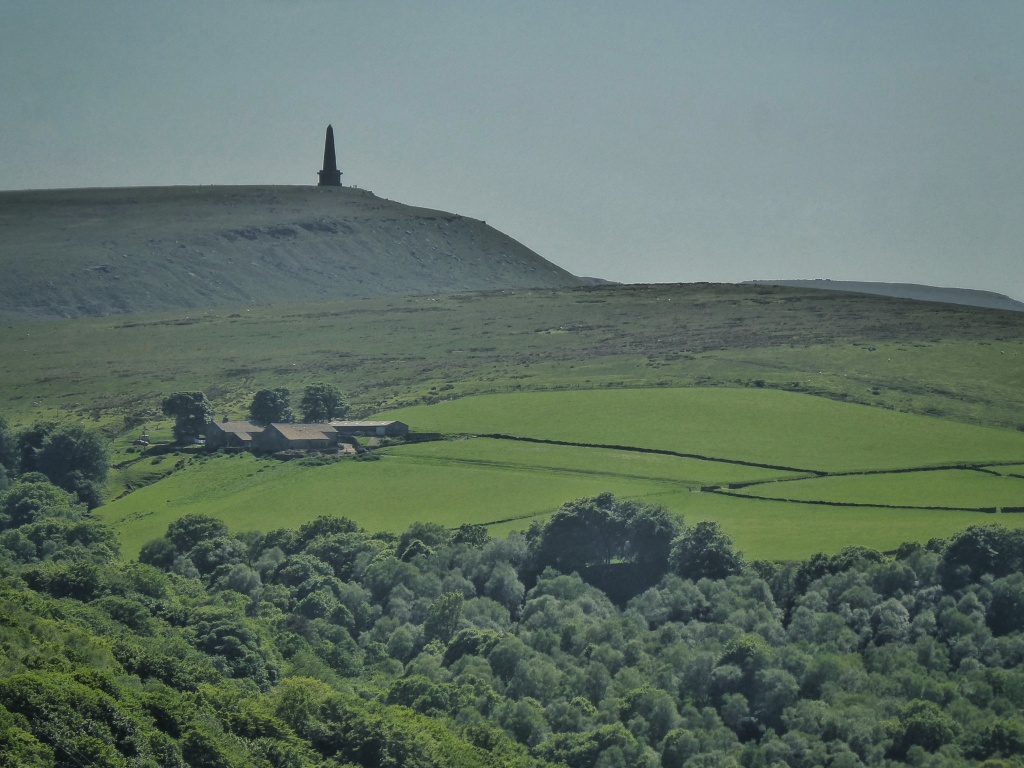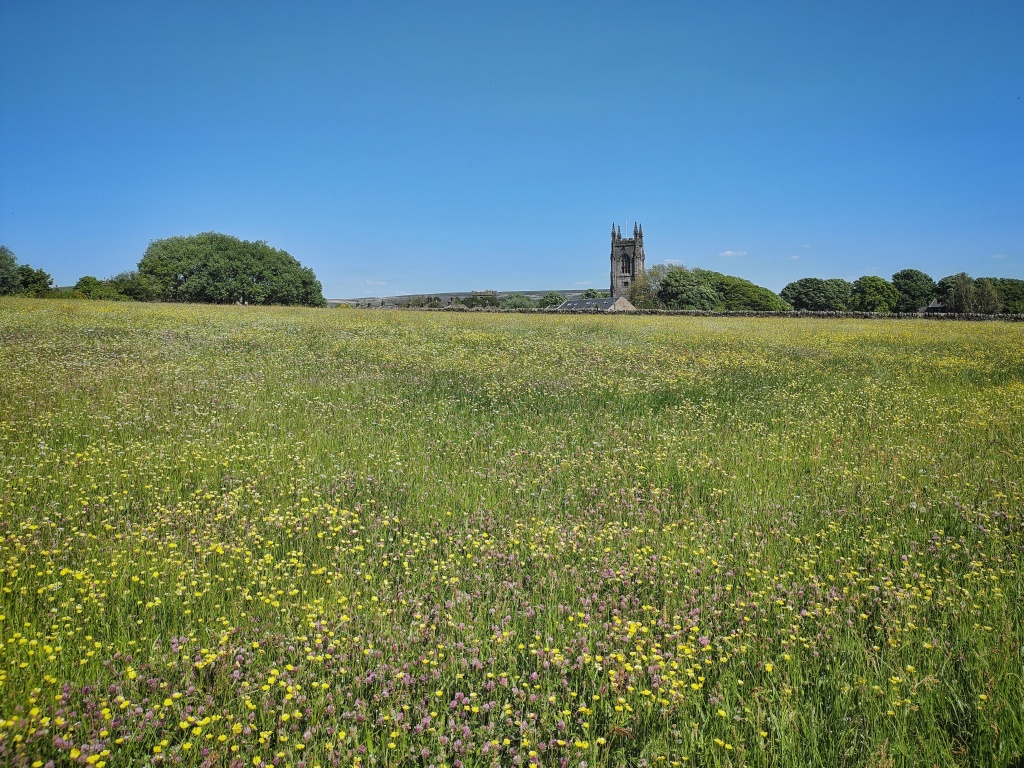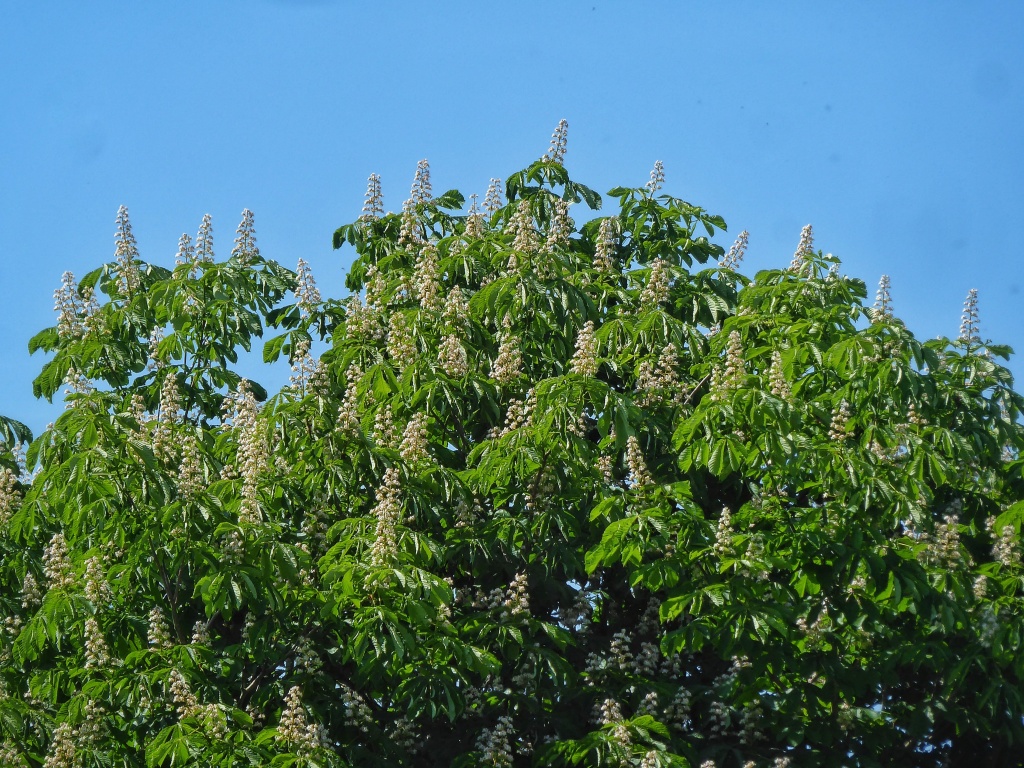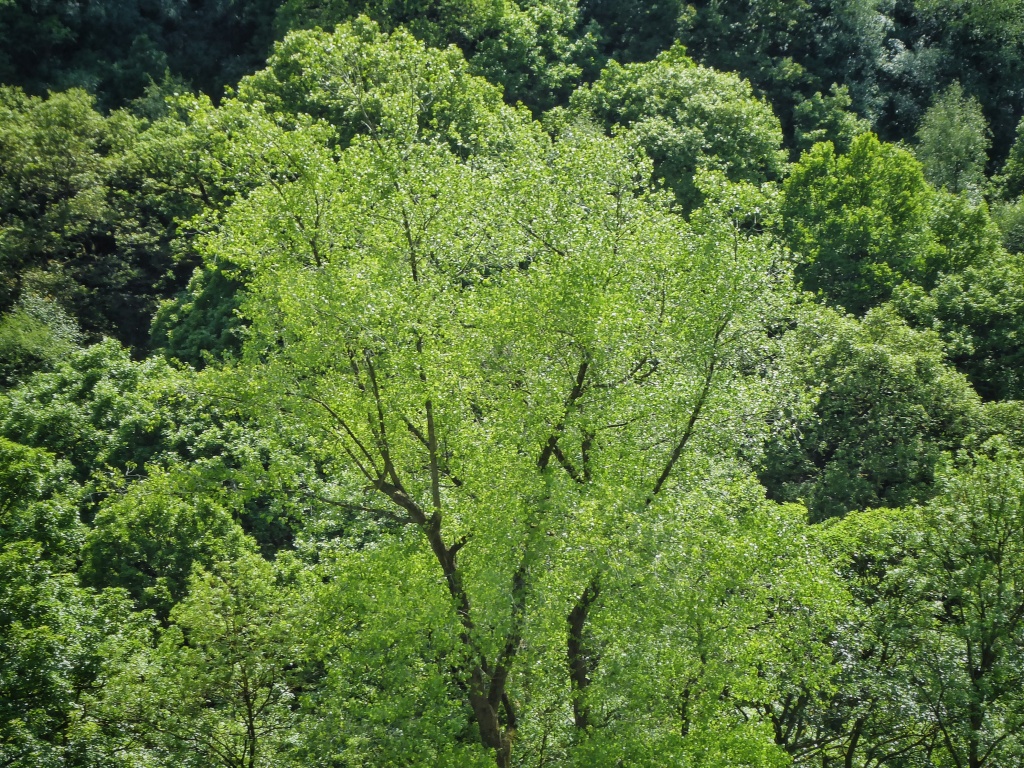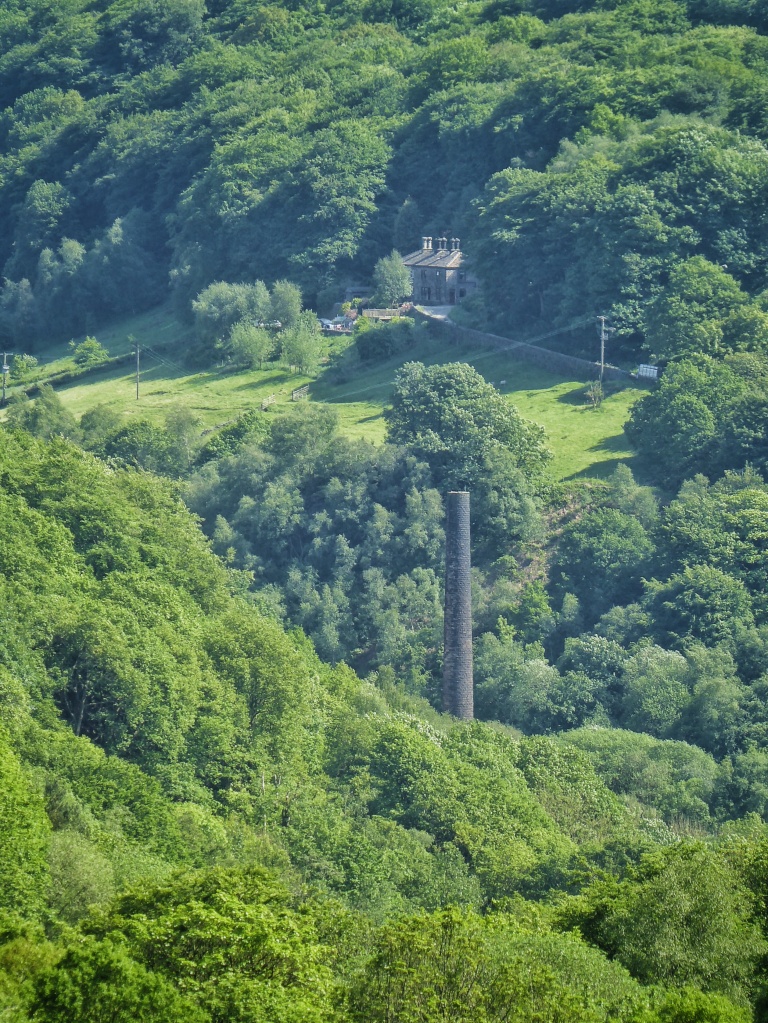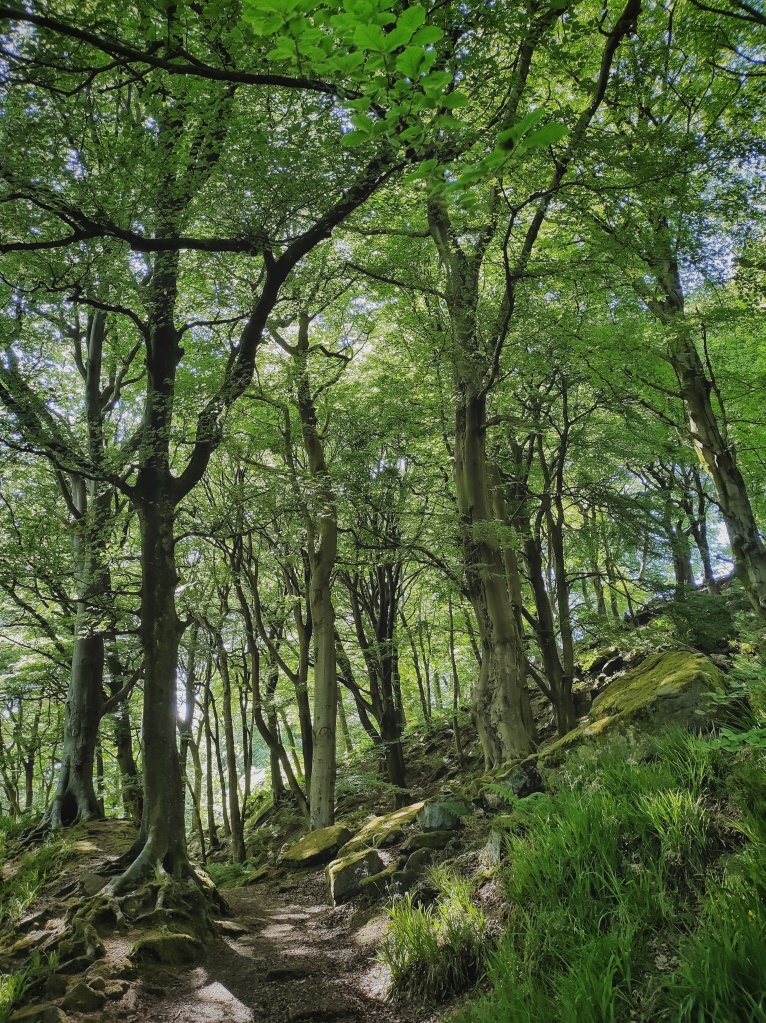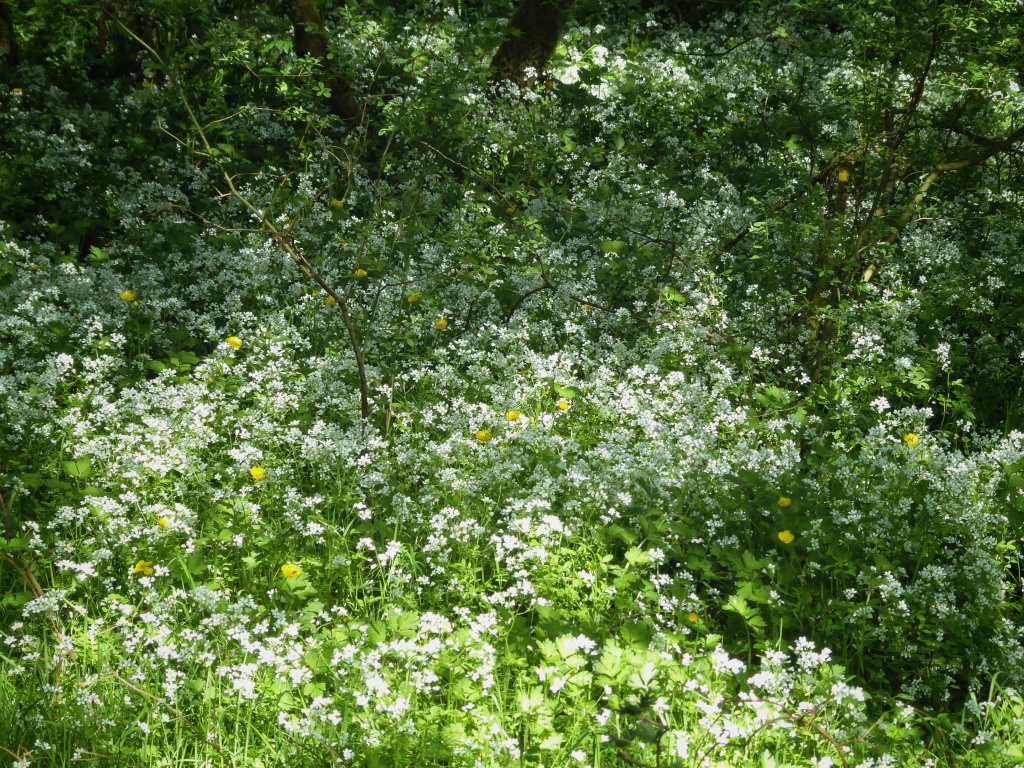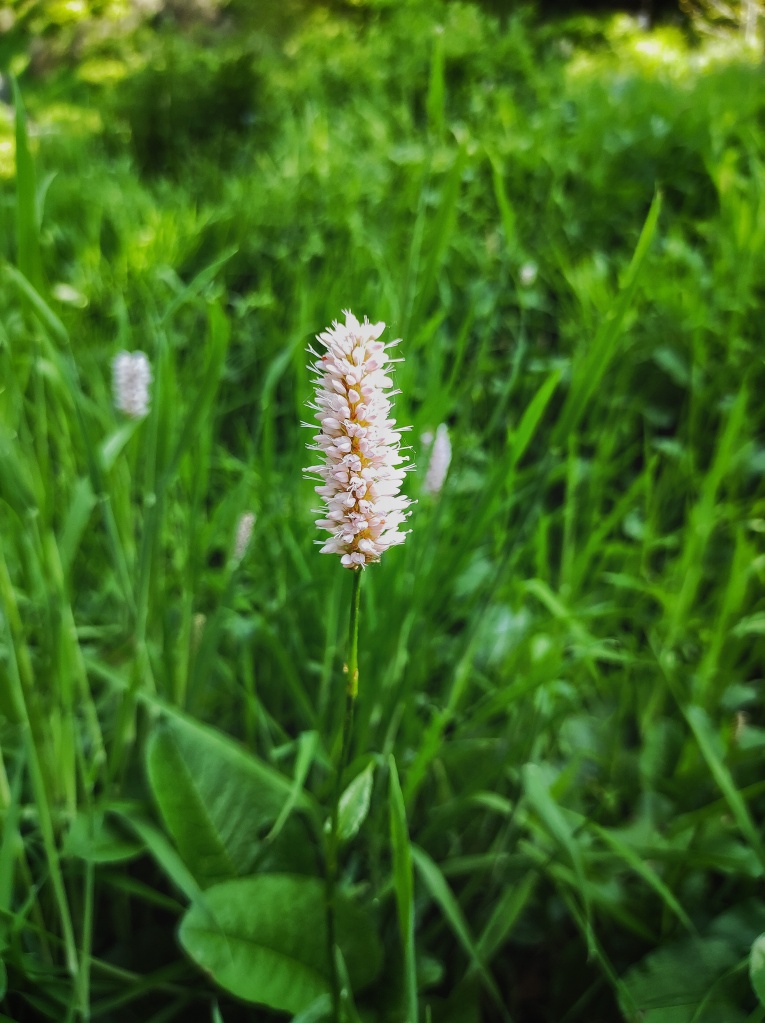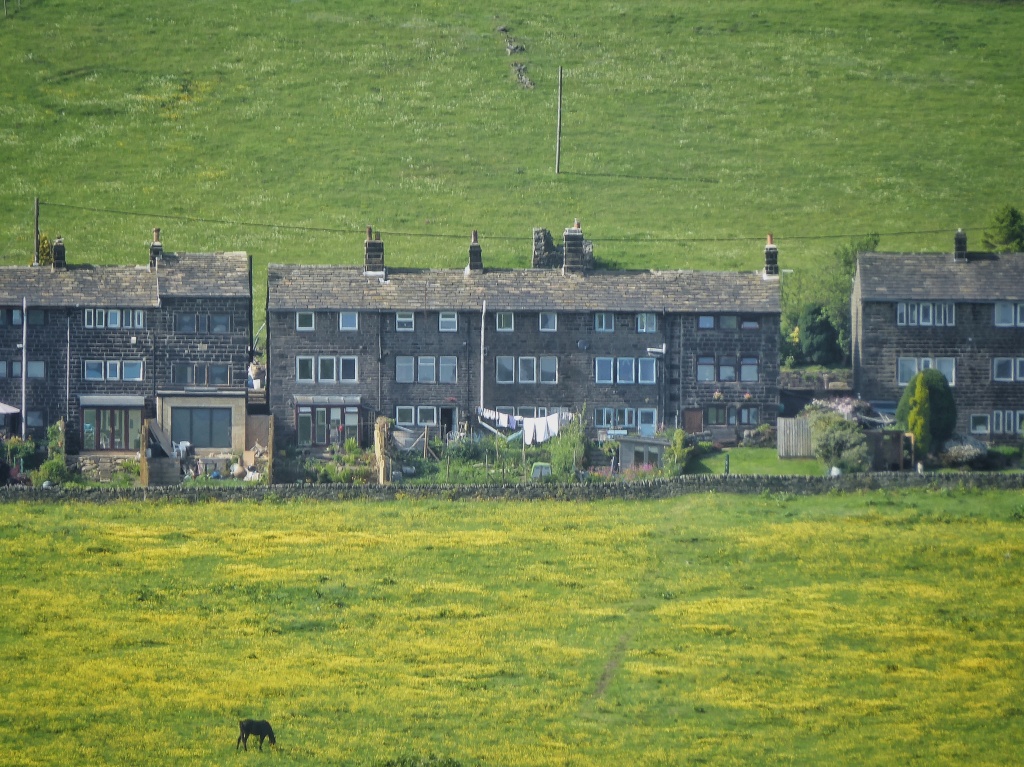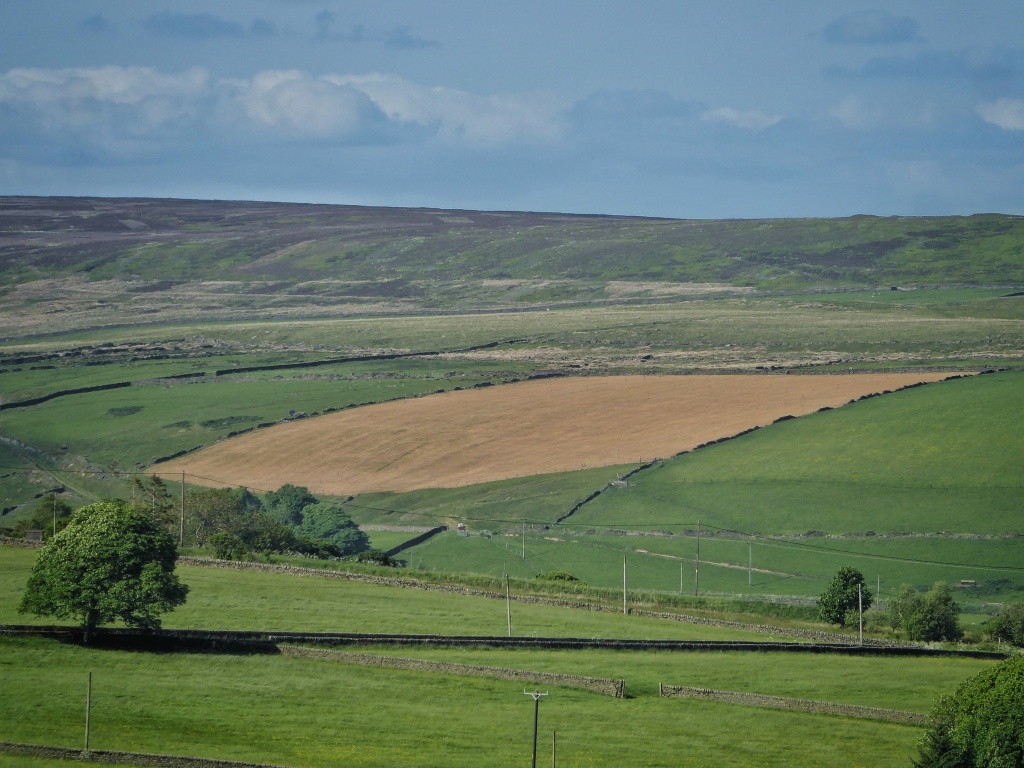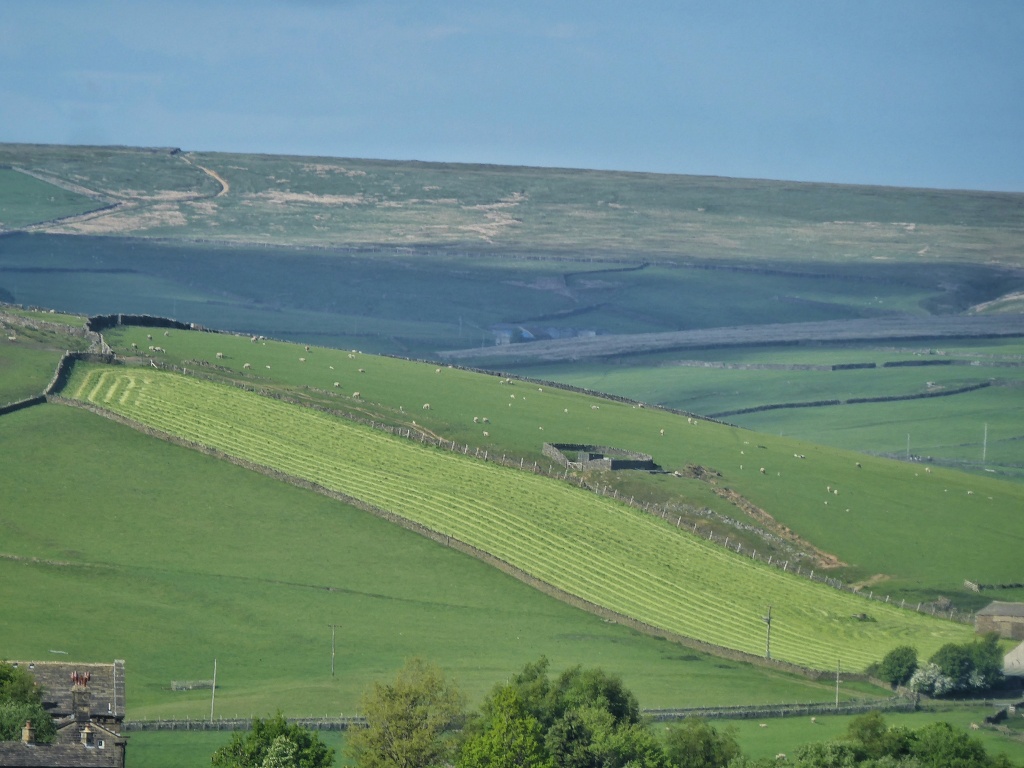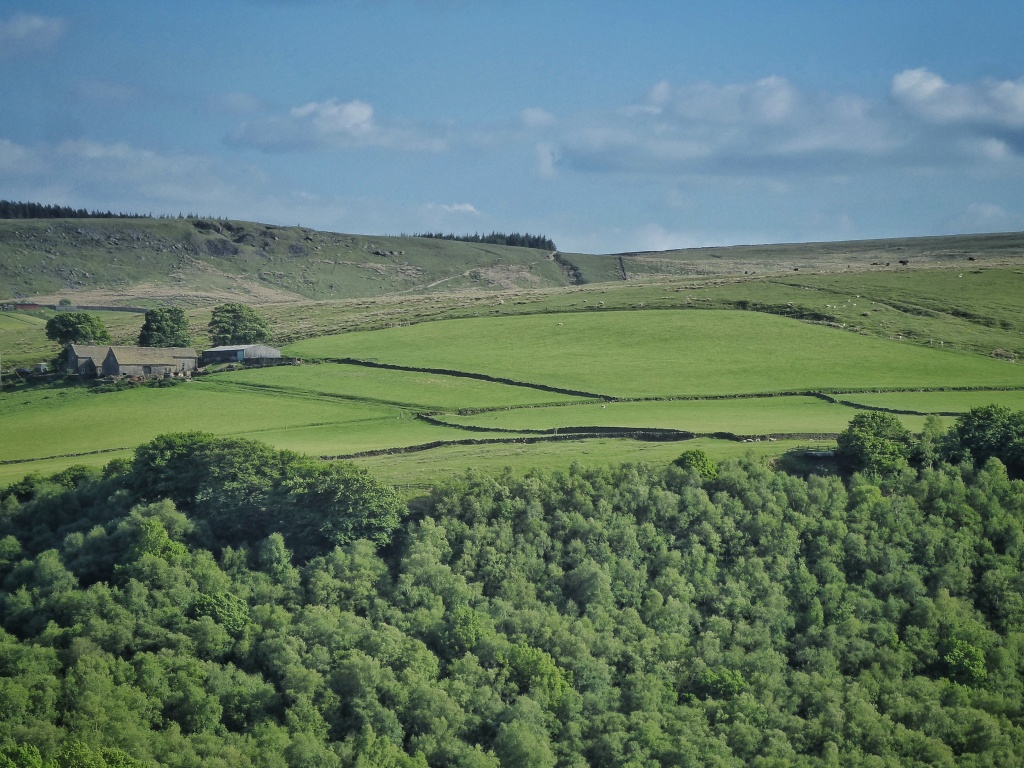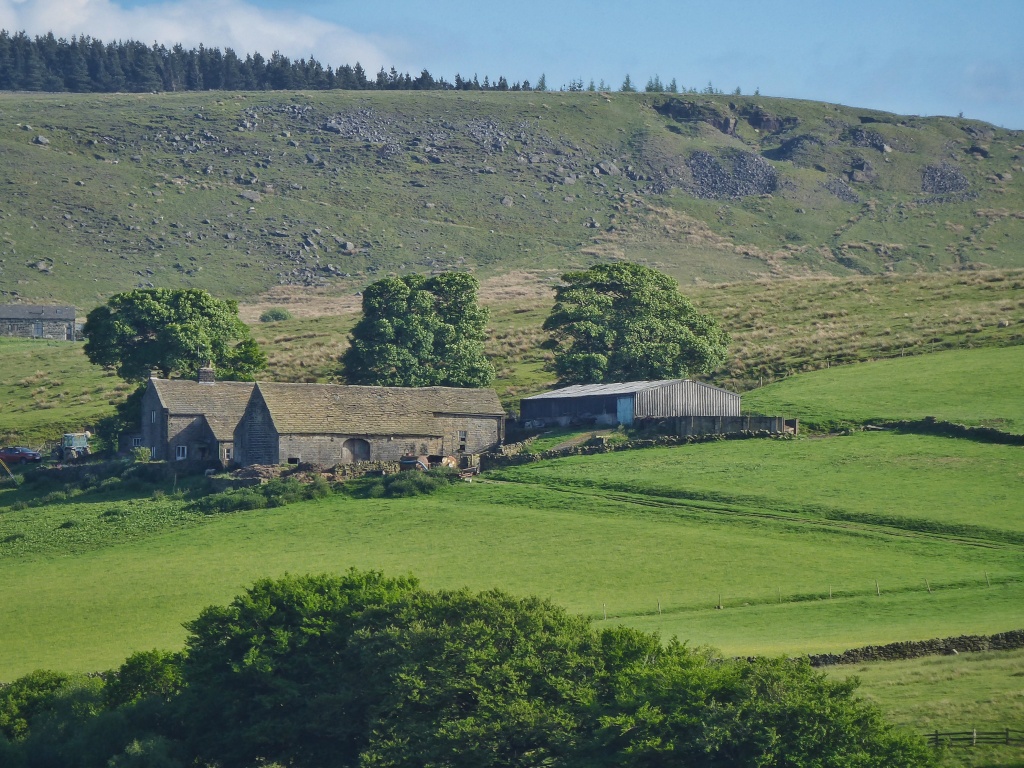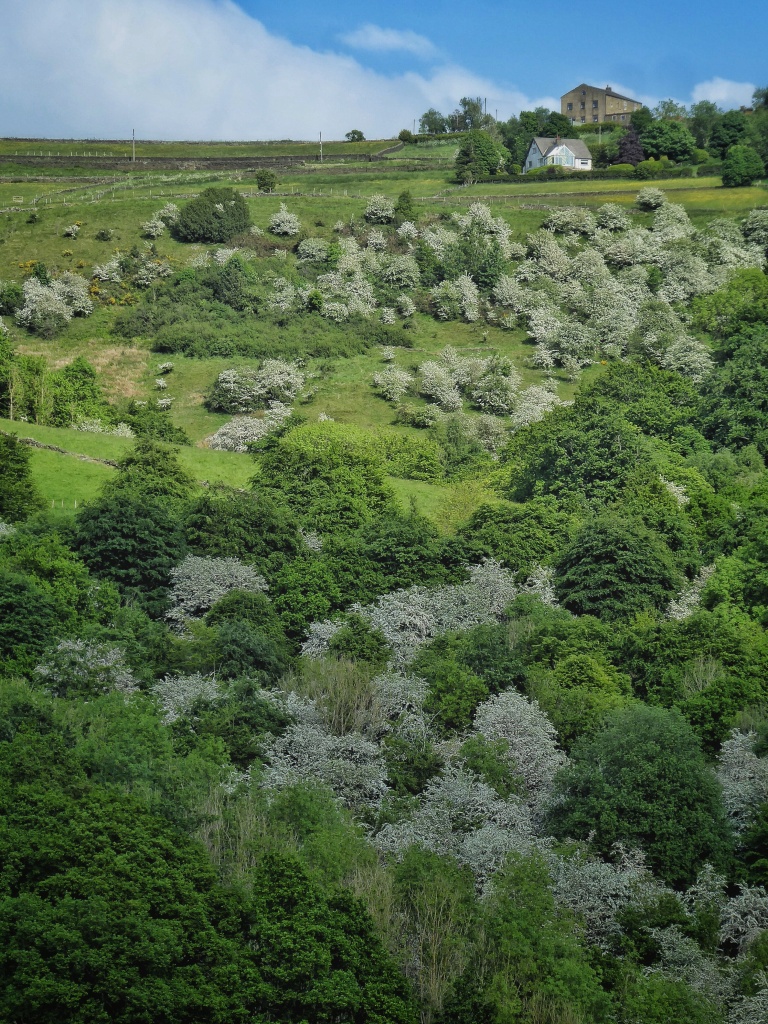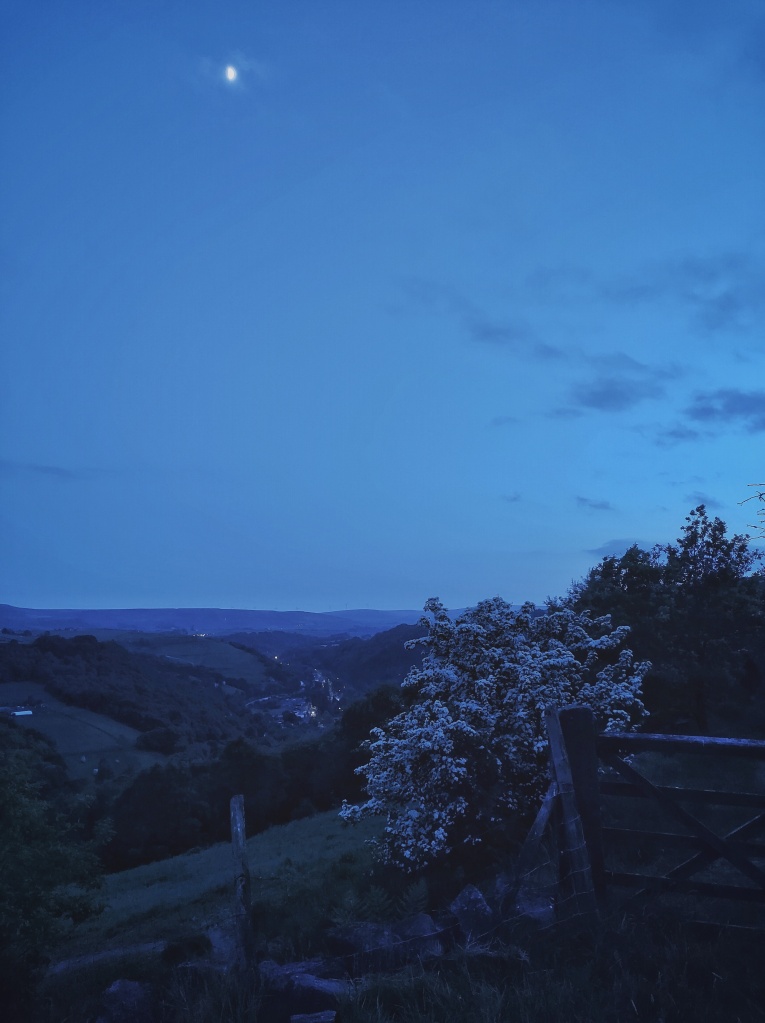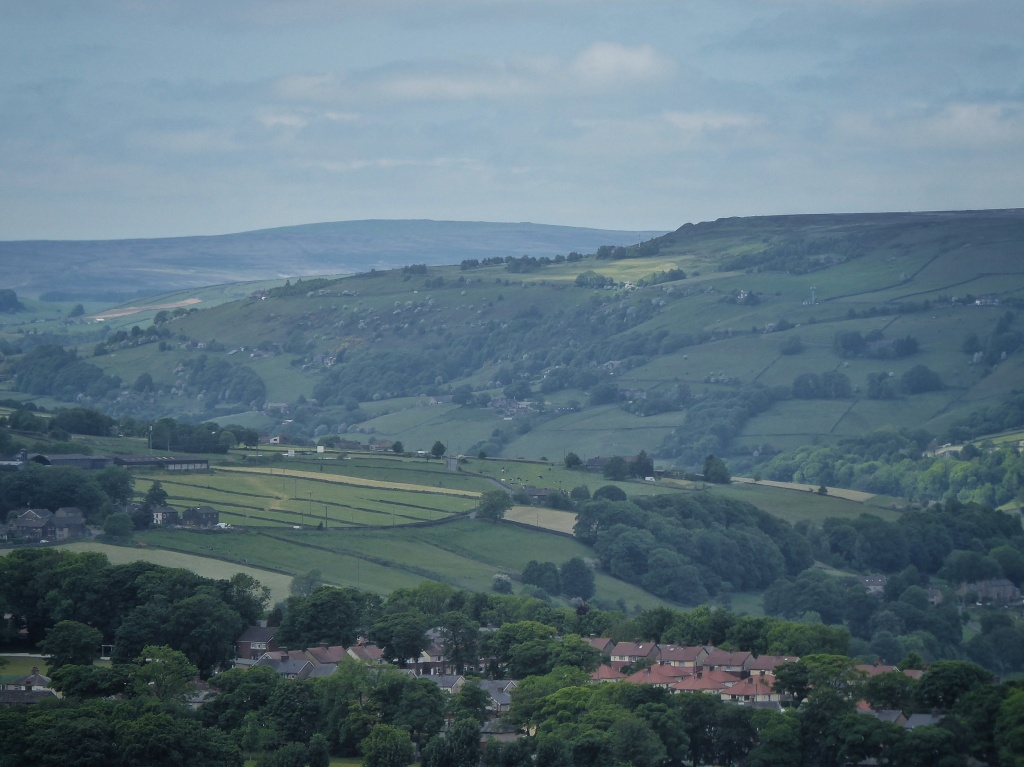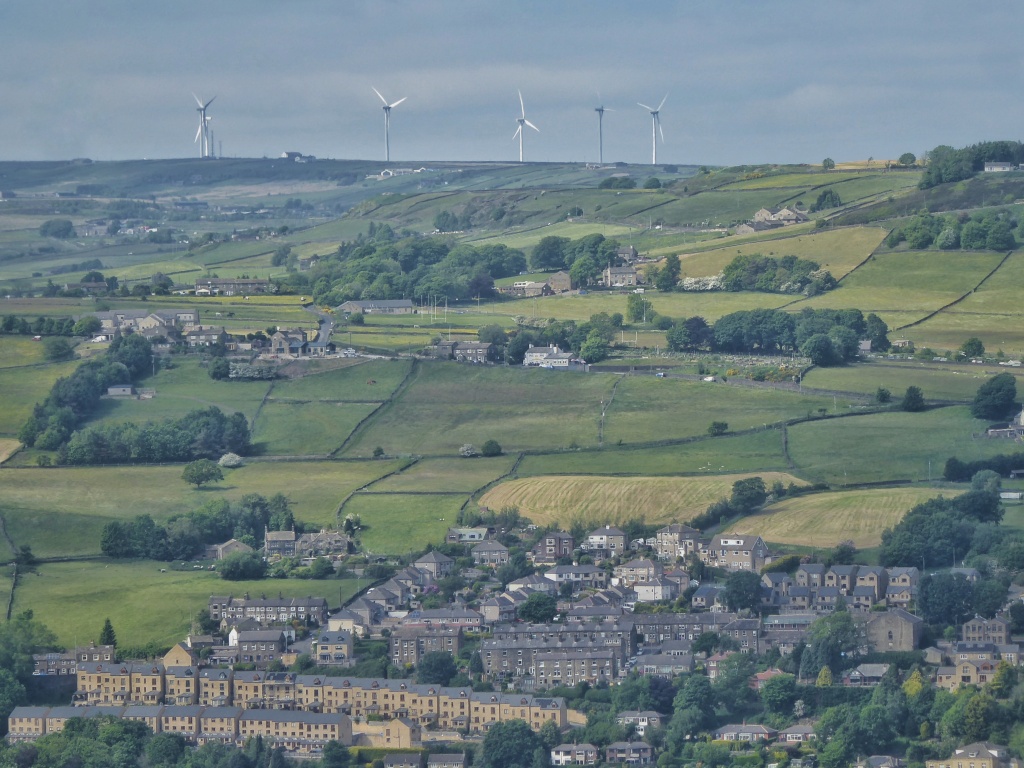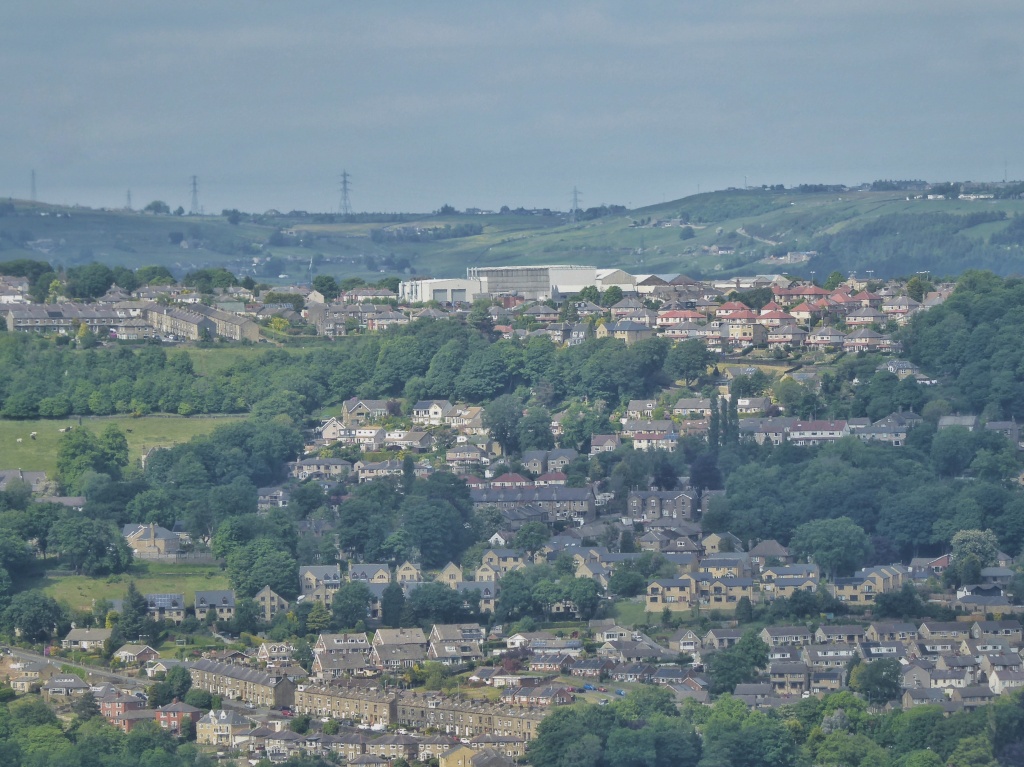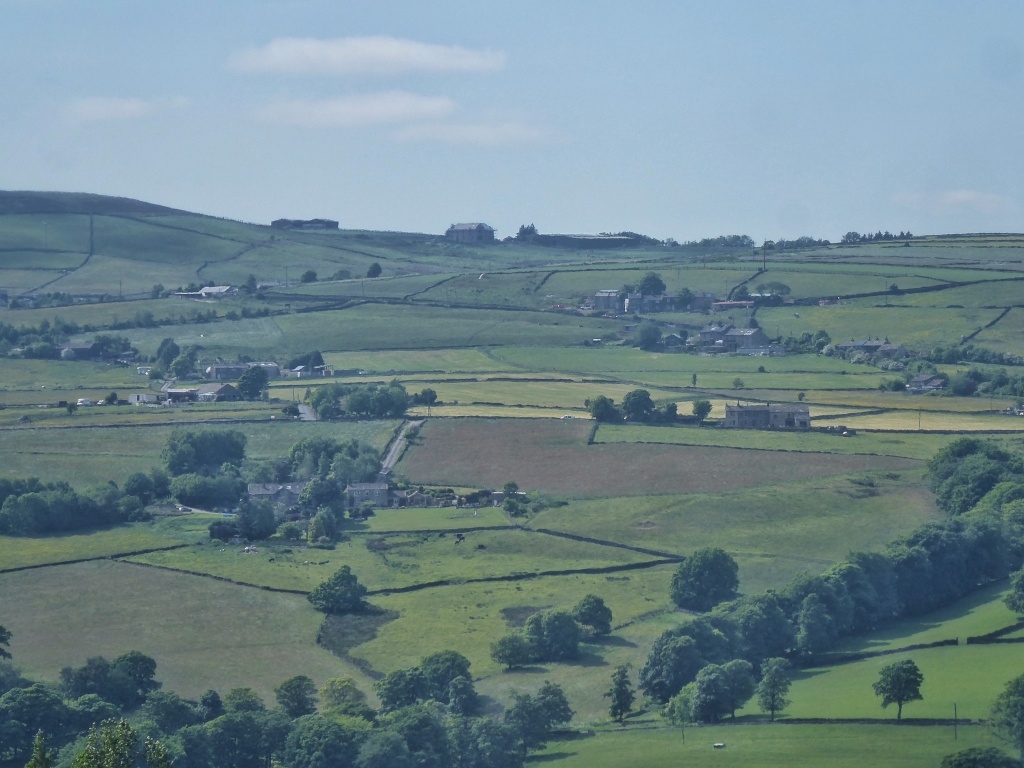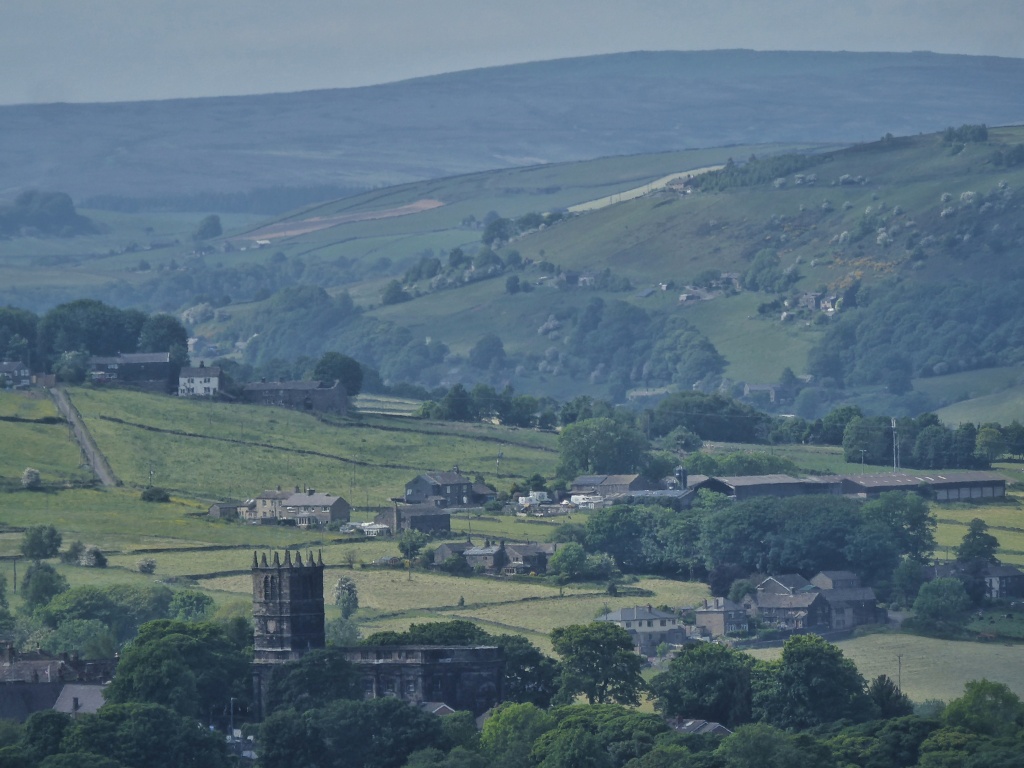The year is poised within the moment of its perfection. Under flawless skies, all the valley’s hawthorns are hoar-frosted with blossom. On the hillsides below Winters, lining the lane to Lower Rawtonstall, climbing out of Nutclough, spilling down Luddenden, they beam white in the brilliant sunshine and beacon at dusk.
Across the landscape, the uniform green of the fields is being patchworked as the farmers come out in force for the first silage cut of the season. Among the dun green of the grazed pastures and the lush thick growth of the meadows that had a dressing of muck or fertiliser earlier in the season and still await their first mow, some are now striped into rows yet to be baled, or have already been cleared and are bare fawn expanses baking in the heat. Above Cow Hey Lane, two striking fields are the colour of copper, revealing that they have been sprayed in preparation for sowing turnips, winter fodder for sheep. Those meadows destined to be cut just once much later in the summer are shorter in growth but all the greater in their diversity; the meadows at Edge End are forests of pignut, their white blossom as spectacular in their diminutive way as the hawthorns. Accompanying them is the pink of red clover, the crimson of common sorrel, the dark bosses of ribwort plantain and the gold of meadow buttercups and yellow rattle, the latter hemiparasitic on the more vigorous grasses, keeping them at bay and giving the other species a fighting chance.
In the woodlands, their deep green shade almost complete now, the trees’ own flowers are also out. Along Beaumont Clough Road, the hollies are starred with their tiny white offerings, male and female on separate trees in this dioecious species, and a soldier beetle crawls over the creamy cloud of a rowan flower. On the edge of Heptonstall Eaves, the escarpment of crags on the western side of the peninsular on which the village perches, a horse chestnut displays its candelabra flowers, tottering towers of white and pink ice cream. Purple blooms of rhododendron brighten the tumble of boulders under the crags of Turret atop Rawtonstall Wood, and on The Whins, as the south-western slope of the headland of Heptonstall is named on the old OS maps, a single gorse, the plant that gave this hillside its name, is resplendent in yellow. Under Lumb Bank, a poplar whispers and shimmers in the gentle breeze; deep within the cool of Colden Clough, the Hebble Hole mill ponds that once served Bob Mill are filled with the white froth of large bittercress; and bistort spires are dotted among the grass at Hebble Hole itself, where children splash in the stream beside the 300-year-old clapper bridge.
Flowers, such is their biological role and relationship with insects, are there for all to see and appreciate. More hidden are the signs of our other wild neighbours. Jerusalem Farm is among the most visited of the local beauty spots, thronged with dog walkers and children on a good day, but there is a parallel world of wildlife that inhabits it, the spoor of their passing faint and easily overlooked. Otter spraints, encrusted with fish bones and scales and with the surprising scent of jasmine tea, are deposited in the shadows under Wade Bridge; fibrous ends to the browsed brambles at the edges of the campsite betray the way that roe deer have torn them between the incisors in their lower jaw and the fleshy pad in their upper, and the bare scraped patches among the leaf litter, sprinkled with white rump hairs, signal where they have bedded down to ruminate after feeding; pale yellow smudges on the holly leaves give away the presence of the larvae of the Agromyzid leaf mining fly, protected from blue tits and parasitic wasps within the mesophyll of the leaf; the scuffled ground at the edge of Allan’s meadows that border Wade Wood, from which a male cuckoo keeps up the repetition of its reedy call for the duration of the day, speak of the nocturnal buffet made of the tubers of the pignuts by badgers; a dropping composed of obsidian ant exoskeletons among the pignuts has been left by a green woodpecker; and beside the dipper-patrolled Caty Well Brook lie the sad scattered feathers and breastbone of a young wood pigeon, likely a victim of a sparrowhawk.
Hebden Bridge heaves with visitors, and Heptonstall, too, is enjoying a special day, celebrating the re-opening of its museum. Housed in a 17th-century building beside the ruins of the 12th-century St Thomas a’ Becket Church, it was closed by the council in 2019, but a Friends group was formed to save it and, after years of work, today is the day. During its closure, it was used in the filming of The Gallows Pole, a BBC adaptation of (or, more accurately, a prequel to) Benjamin Myers’ book of the same name, and the Friends group has chosen to keep, for the time being, the set dressing that made it into a pub for the show. Ahead of the programme’s broadcast in a few days’ time, museum volunteers stalk the grounds of the church in the garb of the Cragg Vale coiners, while the grave of ‘King’ David Hartley himself, yards away in the cemetery, is, as always, sprinkled with coins in tribute.
Overcast mornings give way, sooner or later each day, to warm and clear afternoons, but the chill easterly breeze fails to die down with the ending of each day, blustering on through the twilight. Buzzards ride this wind in the pale western afterglow over the dark gulf of Jumble Hole. The rush of the valley’s waters are joined by the waterfall-hiss of the aspen below Dove Scout. Ronny and Billy the donkeys are silent in their barn, while the hawthorns and rowans in their field release the stored luminous day back into the gloaming. At Turret Brink, a roding woodcock, usually one for pacing the patrol of its territory at a measured speed, hurtles over the gate, frantically impelled by the easterly, shedding the sparks of its call to glow in the long waving grass like phosphorescence in a roiling ocean.
